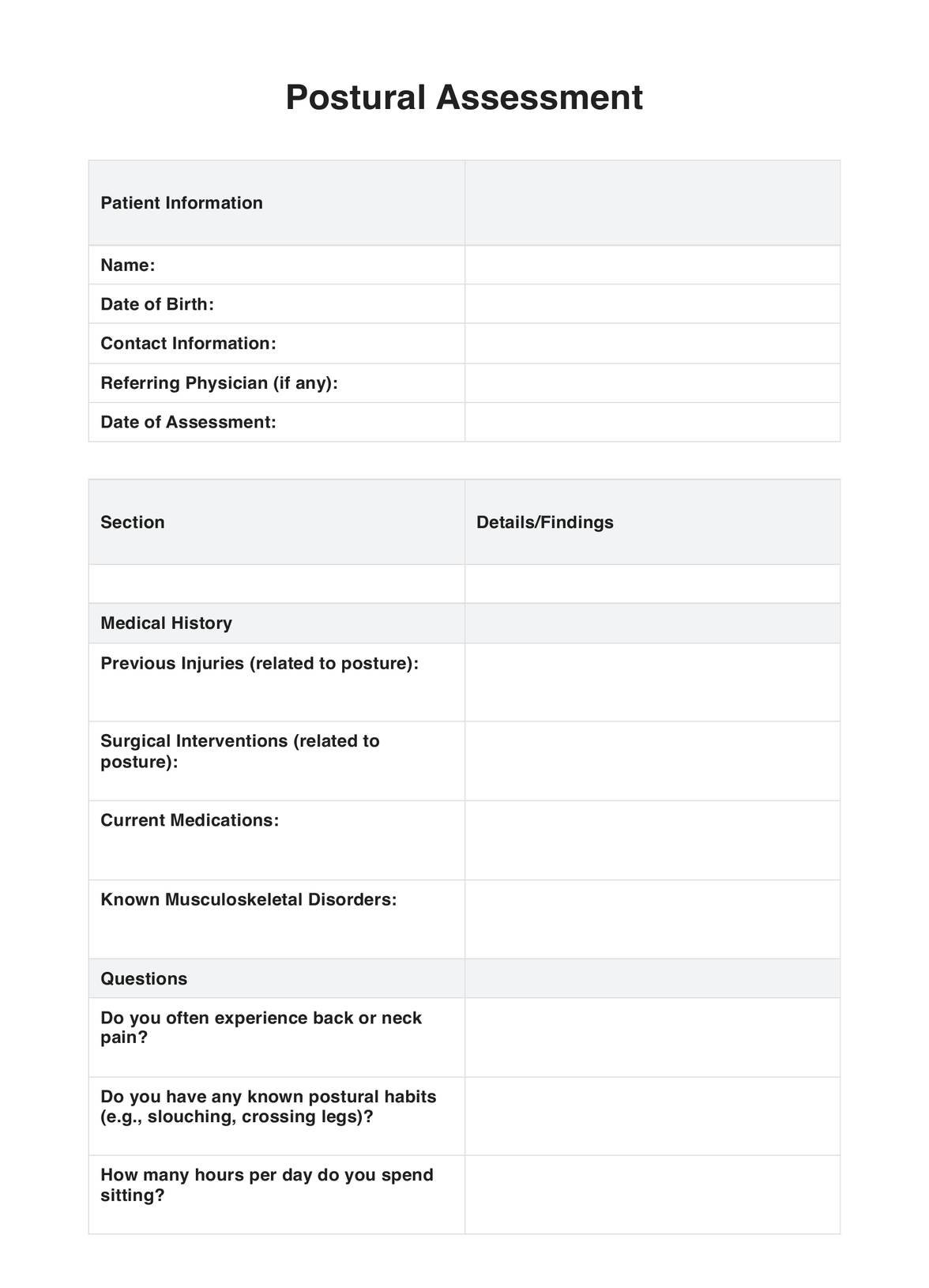Postural assessment is crucial because it provides valuable information about the alignment and positioning of various body parts. Proper posture is essential for maintaining musculoskeletal health, preventing injuries, and optimizing overall upper body and function. Through postural assessment, healthcare professionals, fitness trainers, and therapists can identify imbalances, asymmetries, or abnormalities contributing to pain, discomfort, or dysfunction. Addressing these issues early on can help prevent long-term complications and improve the individual's quality of life.

Postural Assessments
Discover the ultimate guide to postural assessment with Carepatron's free PDF template. Streamline your assessment process, backed by research & expert info!
Postural Assessments Template
Commonly asked questions
Various methods are employed in postural assessment, including visual observation, palpation, and specific measurement tools. Visual observation involves assessing the overall postural alignment of the body and looking for deviations such as tilting, rotation, or asymmetry. Palpation involves feeling for specific anatomical landmarks and muscle tension to identify areas of imbalance. Measurement tools such as goniometers or inclinometers may quantify angles and degrees of deviation in joint alignment. Advanced technologies like motion capture systems or computerized posturography are also employed in some cases for a more detailed analysis.
Postural assessment can benefit a wide range of individuals, including those experiencing musculoskeletal pain, athletes, individuals undergoing rehabilitation, and even those without apparent issues. It is particularly valuable for healthcare professionals, physical therapists, chiropractors, trainers, and ergonomic specialists. Athletes and a fitness professional can use postural assessment to identify areas of weakness or imbalance that may affect performance and injury risk. In a workplace setting, ergonomic assessments based on postural analysis can help prevent discomfort and injuries related to prolonged sitting or repetitive tasks. Ultimately, anyone interested in optimizing their physical well-being can benefit from a postural assessment to identify and address potential issues early on.
EHR and practice management software
Get started for free
*No credit card required
Free
$0/usd
Unlimited clients
Telehealth
1GB of storage
Client portal text
Automated billing and online payments











